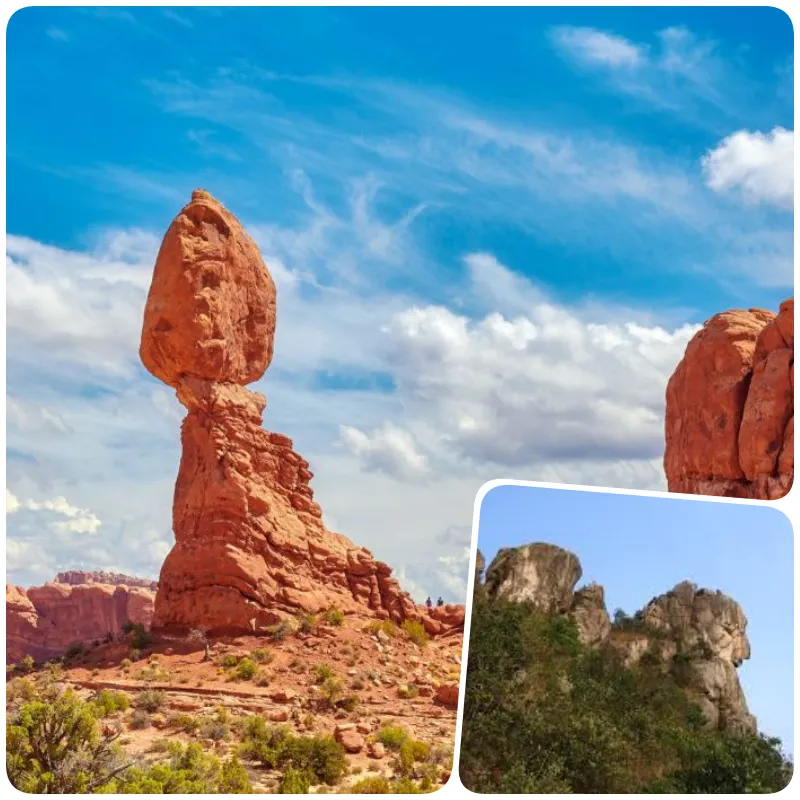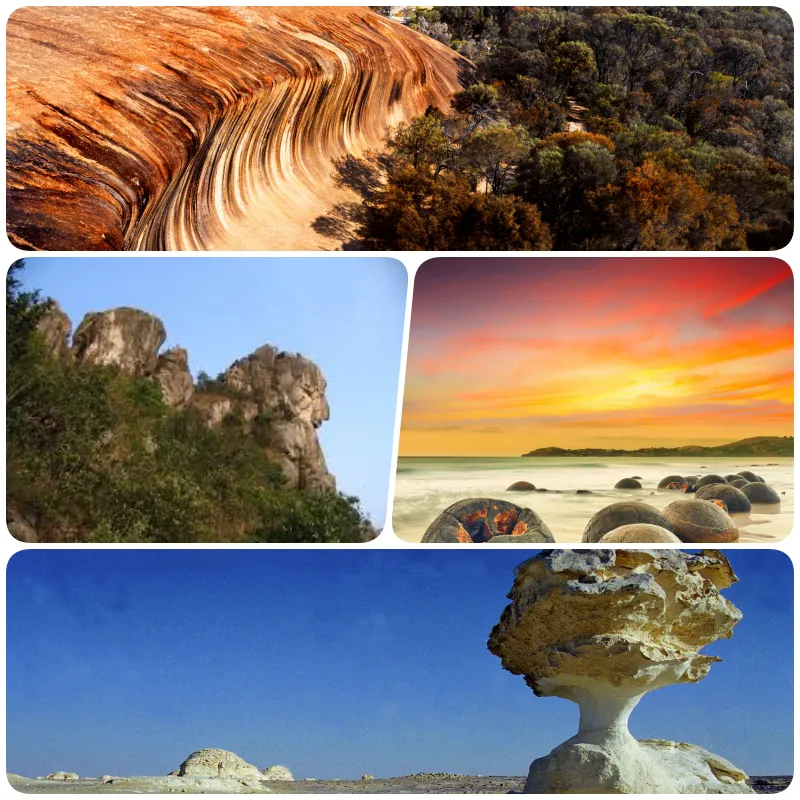
The strangest rocks in the world: Masterpieces of nature
Our planet is full of wonders, and among them are the strangest rocks that demonstrate the incredible artistry of creation.
Elephant Rock – Iceland
Located on the south coast of Iceland, Elephant Rock is one of nature’s most extraordinary creations. This giant rock block looks like a giant elephant bending down to drink water from the sea. Formed from basalt lava during volcanic eruptions millions of years ago, this natural sculpture leaves visitors in awe of the sculpting power of wind and water.
Wave Rock – Australia
Located in Western Australia, Wave Rock is famous for its special shape that reflects a giant ocean wave about to hit. This rock formation stretches 110 meters long and 15 meters high, and is the product of millions of years of erosion and weathering. In addition to its natural beauty, Wave Rock also has cultural significance for Indigenous Australians.

Mushroom stone – Egypt
Standing out among Egypt’s White Desert, the Mushroom Rocks are rock formations that look like giant mushrooms. These rocks have been shaped over thousands of years by desert winds, forming thin stems and wide caps, like solitary mushrooms rising from the vast sands.
Moeraki Rock – New Zealand
Scattered along Koekohe Beach in New Zealand, the Moeraki rocks are famous for their almost perfect spherical shape, resembling giant marbles. These rocks, formed from mud, silt and marine sediments over millions of years, range from 1.5 to 2.2 meters in diameter and are believed to be the result of natural crystallization under the sea.
Balance stone – USA
Located in Arches National Park in Utah, USA, Balanced Rock is a giant rock balanced precariously on a slender rock column. Standing 16.7 meters high and weighing thousands of tons, this incredible piece of architecture has stood the test of time and harsh weather, making it a true wonder of nature.
El Peñón de Guatapé – Colombia
El Peñón de Guatapé or “The Rock of Guatapé” is a 200 meter tall monolith in the town of Guatapé, Colombia. What makes this rock so special is the 740-step staircase built into a natural crack, leading visitors to the top. From the top, you can take in breathtaking views of the surrounding lakes and islands, offering a stunning natural panorama.
Lion’s head stone – Taiwan
Located on the top of Yangming Mountain in Taiwan, Lion’s Head Rock captivates visitors with its uncanny resemblance to a roaring lion. This rock was formed through the weathering and erosion of limestone, creating a unique piece of natural art among the green mountains.

Uluru (Ayers Rock) – Australia
Uluru, also known as Ayers Rock, is one of the largest and most famous monoliths in the world. Located in central Australia, Uluru is 348 meters high and has a circumference of about 9.4 km. This stone is famous for its ability to change color throughout the day, from fiery red at dawn to brilliant orange and purple at sunset. Uluru is also a sacred site to the Anangu people, with many legends and cultural stories associated with its presence.
These incredible rock formations are not only geological wonders but also a reminder of nature’s boundless creativity and the power of natural forces over millions of years.






